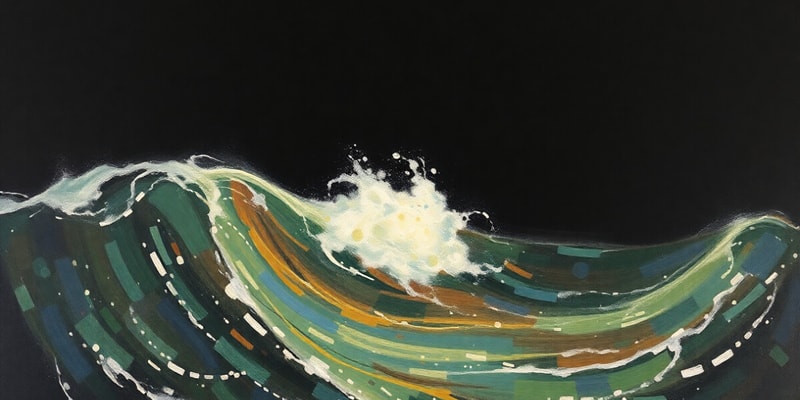Podcast
Questions and Answers
What is the term for the distance between two consecutive wave crests?
What is the term for the distance between two consecutive wave crests?
Which unit is used to measure frequency?
Which unit is used to measure frequency?
What does the amplitude of a wave represent?
What does the amplitude of a wave represent?
What is the relationship between frequency and period of a wave?
What is the relationship between frequency and period of a wave?
Signup and view all the answers
Which of the following describes wave velocity?
Which of the following describes wave velocity?
Signup and view all the answers
Which of the following is NOT a characteristic of periodic waves?
Which of the following is NOT a characteristic of periodic waves?
Signup and view all the answers
What does the period of a wave signify?
What does the period of a wave signify?
Signup and view all the answers
In the wave equation, what does 'v' represent?
In the wave equation, what does 'v' represent?
Signup and view all the answers
Signup and view all the answers
Study Notes
Wave Crest and Trough
- Wave crests are the highest points on a wave, and wave troughs are the lowest points.
- These points represent the maximum displacement of the wave particles from their rest position (equilibrium).
Wavelength
- Wavelength is the distance between two consecutive wave crests or two consecutive wave troughs.
- The SI unit for wavelength is meters (m).
- Wavelength is the distance between two points of the same phase on the wave.
Frequency
- Frequency is the number of complete waves passing a point per second.
- Frequency is measured in Hertz (Hz), where 1 Hz equals 1 complete cycle per second.
- It's also the number of oscillations (vibrations) per second of a vibrating source that generates the wave.
Period
- Period (T) is the time taken for one complete wave to pass a point.
- Measured in seconds (s).
- It's the time for one complete wave vibration.
- The period is the reciprocal of the frequency (T = 1/f).
Amplitude
- Amplitude is the maximum displacement of a vibrating particle from its rest position.
- It's the perpendicular distance from the equilibrium line to the wave crest or trough.
- Represented graphically on sine or cosine wave graphs.
Wave Velocity
- Wave velocity (v) is the speed at which a wave crest travels.
- Measured in meters per second (m/s).
- The relationship between velocity, wavelength, and period is: v = λ/T , where λ is wavelength and T is period.
Relationship between Period and Frequency
- Period and frequency are inversely proportional.
- If the frequency increases, the period decreases, and vice versa.
- The formula relating them is: T = 1/f (Period equals one divided by frequency).
Studying That Suits You
Use AI to generate personalized quizzes and flashcards to suit your learning preferences.
Related Documents
Description
Explore the fundamental concepts of wave properties including crests, troughs, amplitude, wavelength, frequency, and period. This quiz covers essential definitions and measurements associated with waves, making it ideal for students studying wave physics. Test your knowledge and understanding of these critical wave characteristics!




